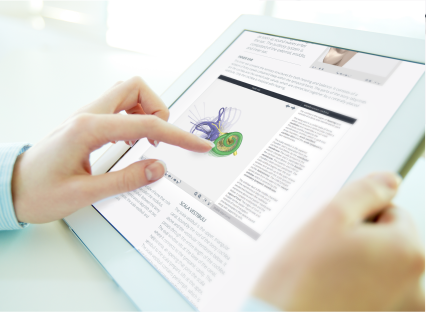Would you like to embed interactive 3D anatomy content directly into your online course materials? Available from TDS Health, Primal Pictures resources do just that.

In a recent case study entitled Accuracy, Integrity and Ease of Use Build Long-term Relationship with University of South Florida, Srinivas Bharadwaj, director of anatomy at the University of South Florida (USF) Morsani College of Medicine, discusses how he has embedded Primal’s anatomy content into their LMS to give students an error-free, time-efficient learning experience.

USF embedded Primal’s Anatomy.tv content into its dissection curriculum for medical and allied health students and created a virtual lab experience. Before coming into physical lab, students perform virtual cadaver dissector sessions where they need to identify a list of structures using Primal’s 3D Atlas or 3D Real-time content.
Bharadwaj says: “This connects them directly to Anatomy.tv, so basically, they can sit in their houses or wherever they are and learn it.” The virtual 3D model is also embedded into quizzes and student self-assessments both pre and post-physical lab.
In class, Bharadwaj also likes to give clinical context to anatomical concepts and relationships using Primal’s imaging content, where the 3D model sits alongside – and has a direct relationship to – MRI and cross-sectional views of the body and its structures.
“We have imaging stations with simulated ultrasound. So, during those times, students use their devices,” says Bharadwaj. “I try to refer to Primal’s MIRs at those times, so they [students] get a correlation between what they see in the lab, or the cadaver station, with the imaging station.”
They focus on active learning methods, including flipped class teaching. “Our concept here is we don’t think every student is tailored to whatever we throw at them, so we try to cater to every student. Either they can be auditory learners, visual learners, or a combination of both. So, we have given them all the tools for them to be successful,” says Bharadwaj.
“As a medical student, you want to spend less time and get more information because of the advancing curriculum and the amount of knowledge you have to imbibe,” he says. As such, Primal remains one of the ways USF builds students’ expertise in a time-efficient way.
Currently, Bharadwaj is exploring Primal’s new Disease & Conditions content, with a view to including this in his clinical anatomy sessions discussing structural changes with students. “Normally, it’s a case-based presentation,” he says. “And probably, your clinical images would help us in those, to identify those things.”
Contact us today for your free demo to learn how Primal Pictures virtual learning anatomy tools can support your curriculum.
